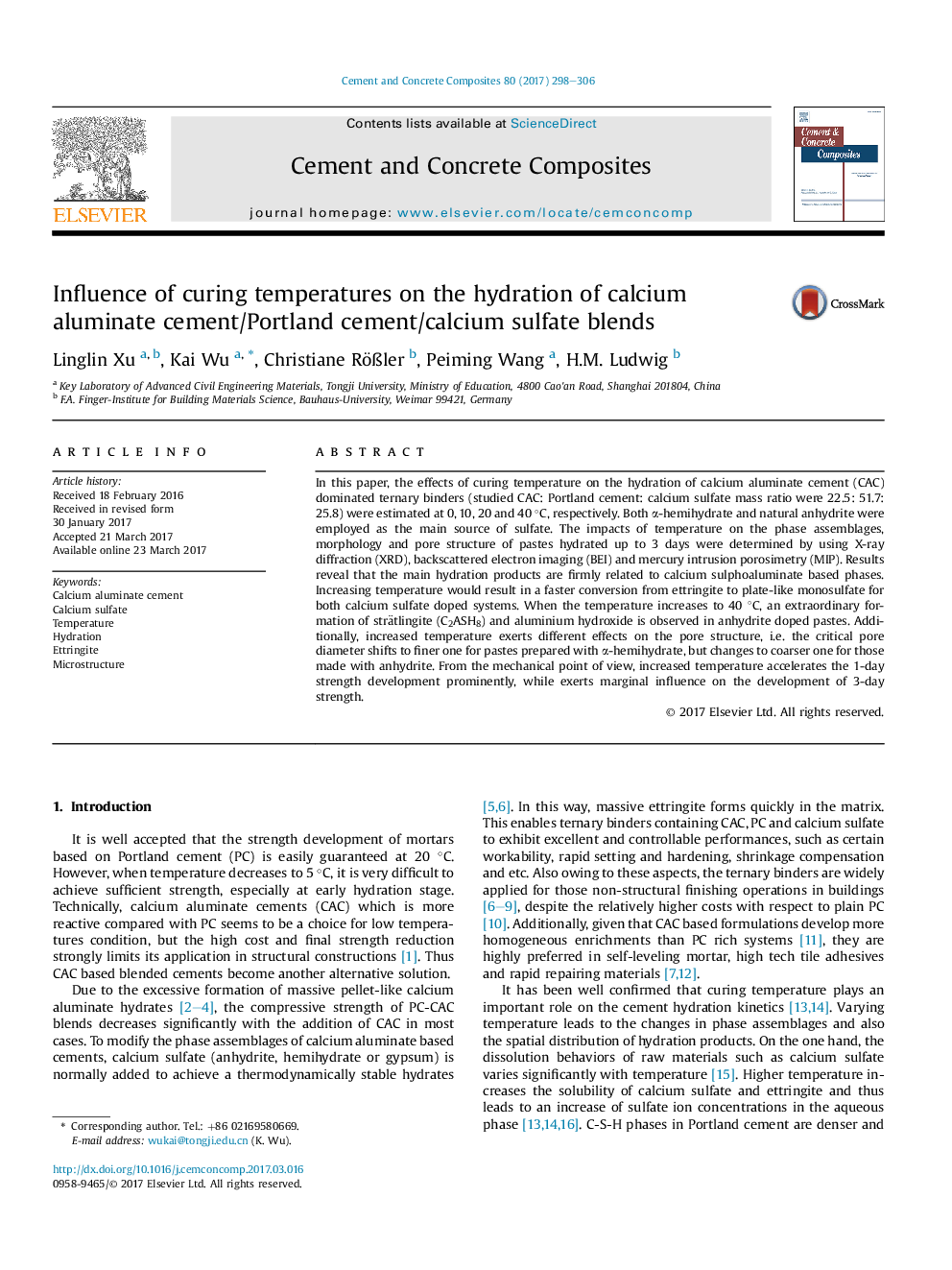| Article ID | Journal | Published Year | Pages | File Type |
|---|---|---|---|---|
| 5436879 | Cement and Concrete Composites | 2017 | 9 Pages |
Abstract
In this paper, the effects of curing temperature on the hydration of calcium aluminate cement (CAC) dominated ternary binders (studied CAC: Portland cement: calcium sulfate mass ratio were 22.5: 51.7: 25.8) were estimated at 0, 10, 20 and 40 °C, respectively. Both α-hemihydrate and natural anhydrite were employed as the main source of sulfate. The impacts of temperature on the phase assemblages, morphology and pore structure of pastes hydrated up to 3 days were determined by using X-ray diffraction (XRD), backscattered electron imaging (BEI) and mercury intrusion porosimetry (MIP). Results reveal that the main hydration products are firmly related to calcium sulphoaluminate based phases. Increasing temperature would result in a faster conversion from ettringite to plate-like monosulfate for both calcium sulfate doped systems. When the temperature increases to 40 °C, an extraordinary formation of strätlingite (C2ASH8) and aluminium hydroxide is observed in anhydrite doped pastes. Additionally, increased temperature exerts different effects on the pore structure, i.e. the critical pore diameter shifts to finer one for pastes prepared with α-hemihydrate, but changes to coarser one for those made with anhydrite. From the mechanical point of view, increased temperature accelerates the 1-day strength development prominently, while exerts marginal influence on the development of 3-day strength.
Related Topics
Physical Sciences and Engineering
Engineering
Industrial and Manufacturing Engineering
Authors
Linglin Xu, Kai Wu, Christiane RöÃler, Peiming Wang, H.M. Ludwig,
